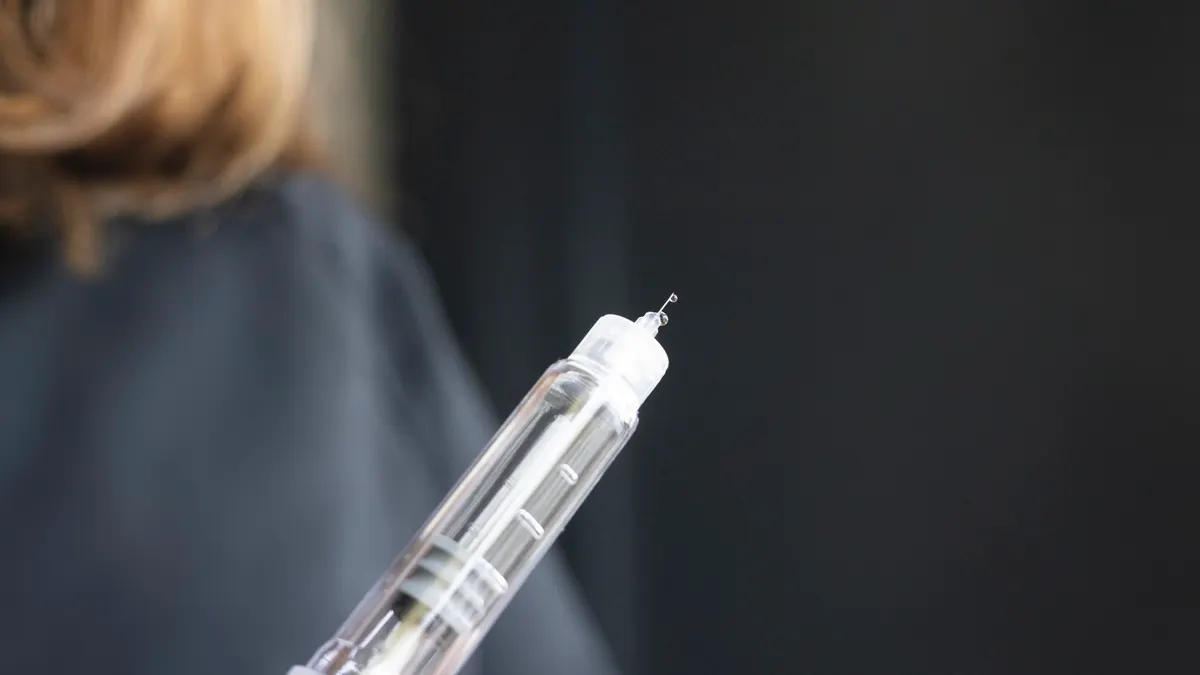Earlier this year, Eli Lilly launched LillyDirect, an online pharmacy and telehealth platform to help patients with diabetes, obesity and migraines find a doctor, secure an appointment, and get medications delivered directly to them.
For anyone following the femtech space, the model looks familiar. Over the past five years, similarly structured telehealth startups have flooded the market, from Alloy Women’s Health, which specializes in menopause, to the fertility- and newborn-focused Maven Clinic.
Some of the companies have come with celebrity endorsements and splashy seed investments, giving the appearance of a market that’s exploding, and by some measures, femtech has indeed been on the rise. Scores of telehealth and digital health companies focused on women quickly developed into a market worth $28 billion last year, that's now estimated to reach $103 billion in value by the end of 2030. The burgeoning space has even spawned a handful of unicorns, including Maven Clinic, which hit the billion-dollar milestone in 2021.
Yet, femtech is far from reaching its full potential, with the market representing just a fraction of all digital health investments.
“At the best of times, female technology only got about 6% to 7% of total digital health funding [globally],” Reenita Das, partner and senior vice president of healthcare & life sciences at market research firm Frost & Sullivan, said. During some years it dips down to just 4%.
“Very few venture capitalists are actually supporting this,” Das said.
At the same time, pharma’s interest in women’s health drugs has been topsy-turvy in recent years. Last year, Astellas Pharma notched an approval for the first non-hormonal menopause drug, demonstrating a step-change in women’s health innovation. Yet, Bayer’s shift away from women’s health R&D last year also showed how pharma is directing more research dollars towards oncology, immunology and cardiovascular issues, along with advanced modalities for several diseases.
And while the launch of LillyDirect highlights pharma’s growing interest in the direct to consumer sale model, the focus on diabetes shows how the industry continues to overlook the potential of women’s health, Das said.
“Diabetes is not that big a disease in terms of population” when it’s compared to menopause, Das noted. While about 422 million people worldwide have diabetes, 1.1 billion women will be menopausal by 2025.
In addition, menopause “goes on for 20 years,” Das said, with the average woman spending 40% of her life post-menopause and experiencing a host of other health conditions that can stem from it, including the familiar hot flashes and night sweats, along with the potential for cardiovascular issues and autoimmune disease.
“A product that is supporting the whole life of a woman, from beginning to end, is not there."

Reenita Das
Partner, senior vice president of healthcare & life sciences, Frost & Sullivan
“So many diseases are coming out of that one disease. And mental health [challenges] on top of that,” Das said.
Valentina Sartori, a partner at McKinsey & Company, echoed that sentiment while comparing diabetes with endometriosis, another disease that exclusively affects women.
“It has the same prevalence of diabetes, yet there are probably 10-20 assets in the pipeline for endometriosis,” Sartori said, compared to hundreds for diabetes.
As femtech companies face a tough investment market, and pharma juggles other R&D priorities, several areas of opportunity are still waiting to be tapped in women’s health. Here are three strategies Das and Sartori suggested to make women’s health investments for pharma and femtech pay off.
Rethink the phrase “women’s health”
When analyzing the women’s health market, Sartori said she’s often advised to “talk to the companies that focus on contraception or menopause.” In reality, women’s health is about much more than reproductive and sexual health.
A McKinsey Health Institute report published earlier this year and co-authored by Sartori showed that sexual and reproductive health combined with maternal, newborn and child health account for just 5% of women’s health burden, while 56% of the burden comes from conditions more prevalent or manifested differently in women, such as headache disorders, autoimmune diseases, atrial fibrillation and colon cancer.
“If I look at your immunology portfolio, or your cancer portfolio, or your cardiovascular portfolio, you're in there,” she said of pharma companies that don’t think they’re operating in the women’s health space.
Indeed, pharma and femtech companies often focus on menopause, family planning or other separate aspects of a woman’s life when strategizing their approach to women’s health, which misses an opportunity for end-to-end solutions.
“A product that is supporting the whole life of a woman, from beginning to end, is not there,” Das said. “That doesn’t exist today. All these companies are playing in isolation.”
A hybrid model in femtech is best
Many femtech companies connect women with doctors via telehealth, either through video visits or asynchronous, chat-based care. From there, doctors might prescribe medicines such as birth control pills or estrogen cream. Some platforms also have digital tools to help users find a local doctor.
However, Das believes the best femtech models take a hybrid approach, offering not only telehealth and online healthcare services but also in-person care via their own brick-and-mortar clinics.
“Is the virtual care model itself very effective by itself? No,” she said. “Because at the end of the day … even though consumers want convenience, a hybrid model works the best, where there is some level of face-to-face interaction, where you’re going into a care environment.”
Without face-to-face interactions, telehealth physicians can only get to know patients as numbers on a chart, which can limit the care they provide and which prescriptions they might recommend.
“My problem with [telehealth only] is that it’s so generic. How does that doctor really know me on a holistic level? I might be having blood pressure issues; I might be having sleep issues; hormonal imbalance,” Das said. “Sometimes the level of detail becomes very basic.”
Successful femtech companies that are taking this hybrid approach include Maven Clinic and Tia, Das said.
Don’t forget women over 40
Although some femtech companies focus on care for women over 40, Das said there are still not enough to meet the demand. And that’s true across the board, with most women’s health investments concentrated in services for younger women.
“If you look at the female economy today in terms of women’s health, sadly 80% of the dollars are actually focused on everything that’s happening to women below 40. And there’s very little that’s happening for women in terms of digital solutions after 40,” Das said. “There is a mismatch between products, money and services which are only catering to one very large group.”
Menopause and diseases associated with it also represents a huge, untapped market.
“It is the condition that has 100% prevalence in a population, yet it has been understudied for many, many years,” Sartori said.
There’s also an opportunity for pharma and femtech companies to educate women about what happens to their bodies at this stage of life. Research has shown that women often don’t understand or recognize their menopause symptoms.
These factors have limited market penetration and awareness of femtech companies.
“It’s still very small … [and] there’s a lot more literacy that we need to do with regular women for women’s health,” Das said.



















